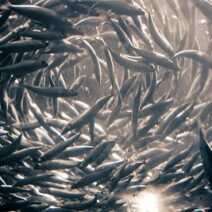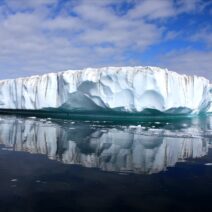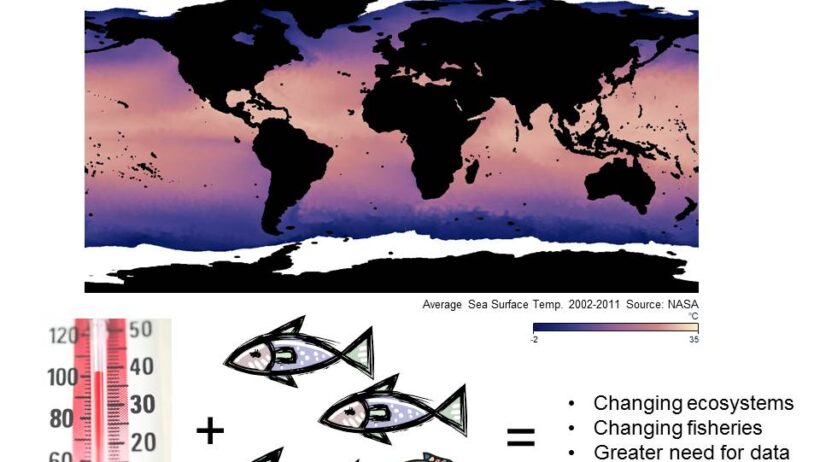The ocean, a vast expanse teeming with life, has long been a sanctuary for countless species. However, its current state is under immense pressure due to the escalating impacts of global warming. This phenomenon is not merely an environmental issue; it is fundamentally reshaping the intricacies of marine ecosystems and the foraging behavior of various organisms that inhabit these waters. Understanding these changes is imperative not only for the health of marine biodiversity but also for the sustainability of human economies that depend on the ocean’s resources.
As temperatures rise, a profound transformation occurs within the ocean’s thermal dynamics. The primary effect of this warming is the alteration of ocean stratification—where the warmer water sits atop the cooler, denser water below. Increased stratification can hinder the vertical mixing of ocean waters, a vital process that transports nutrients from the depths to the surface. Nutrient availability is crucial for primary producers like phytoplankton, the foundation of the marine food web. When these producers are affected, the ramifications ripple throughout the ecosystem, ultimately impacting every organism—the little ones and the larger predators alike.
Moreover, the phenomenon of ocean acidification accompanies rising temperatures, as higher levels of carbon dioxide are absorbed by the ocean. This increase in acidity has deleterious effects on calcifying organisms, such as corals and shellfish, which struggle to maintain their calcium carbonate structures. Coral reefs, often referred to as the rainforests of the sea, are particularly vulnerable; they provide habitat and shelter for a myriad of marine species. As corals bleach and die, entire ecosystems unravel, depriving species of their homes and diminishing biodiversity.
The shifting climate is not just affecting physical and chemical processes but also altering biological behaviors. Foraging patterns of marine species are undergoing significant transformation due to changes in prey availability and the spatial distribution of marine species. Fish and other marine animals are increasingly moving towards cooler waters, leading to alterations in local biodiversity and fishing yields. Such migrations often take species far from their historical ranges, creating challenges for fisheries that must adapt to the new distribution of keystone species.
When fish populations shift, the communities that rely on them for sustenance—both human and wildlife—face instability. Communities dependent on specific fish species can experience economic downturns if these fish become scarce. For example, North Atlantic cod populations, once abundant, have dramatically declined due to overfishing compounded by changing ocean conditions. This not only affects local fishing economies but can also lead to increased competition for remaining resources, further stressing marine ecosystems.
The interconnectivity of marine ecosystems means that the repercussions of these changes extend beyond one species. For instance, changes in fish foraging behavior can alter predator-prey dynamics, leading to overpopulation of certain species while others dwindle. This imbalance can precipitate ecological cascades that drastically alter the composition of marine communities. The resulting changes in biodiversity can diminish the resilience of ecosystems, making them more susceptible to further environmental stress.
While the implications of global warming are significant, it is essential to consider adaptive strategies for marine management. Marine protected areas (MPAs) are one approach that can mitigate the impacts of climate change by providing sanctuaries for marine life. These areas can help to conserve critical habitats and allow ecosystems to recover from the pressures of overfishing and environmental degradation. Furthermore, adaptive fisheries management that adjusts to changing ecosystems can be pivotal in sustaining both marine biodiversity and local economies.
In addition, advancements in technology are enabling better monitoring of ocean conditions and species distribution. Data collection through satellite technology and underwater sensors can provide real-time information, allowing for more informed decision-making in resource management. Such tools not only aid in understanding the immediate effects of climate change but also help predict future trends, allowing for proactive rather than reactive management strategies.
Community engagement is paramount in the fight against the adverse effects of climate change on marine ecosystems. Local populations often possess invaluable traditional knowledge and can contribute to sustainable practices that align with ecological preservation. Educational initiatives aimed at raising awareness of marine health can lead to more responsible consumer choices and grassroots conservation efforts.
The future of our oceans is contingent upon recognizing and addressing the myriad ways in which global warming is influencing marine ecosystems and foraging behaviors. Each individual has a role to play; whether through advocacy, responsible consumption, or supporting conservation initiatives. The complexity of these challenges necessitates an interdisciplinary approach, involving scientists, policymakers, fishermen, and everyday citizens alike.
In conclusion, as the oceans continue to undergo transformative changes due to global warming, our understanding and response must evolve. The connection between rising temperatures, altered foraging behaviors, and the overall health of marine ecosystems must be embraced and acted upon. We stand at a critical juncture, where our choices can either propel us toward sustainable oceans or plunge us deeper into ecological crisis. The time to act is now, for the health of our oceans determines the health of our planet for generations to come.








